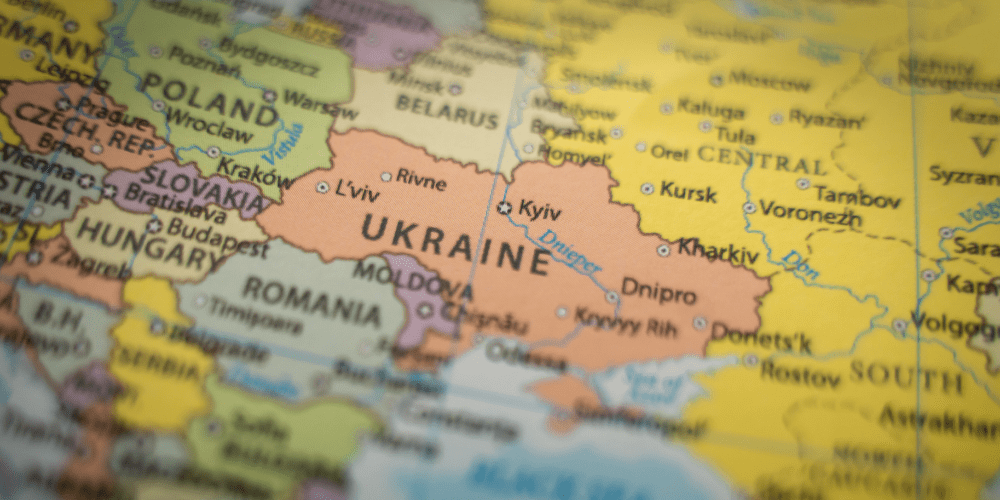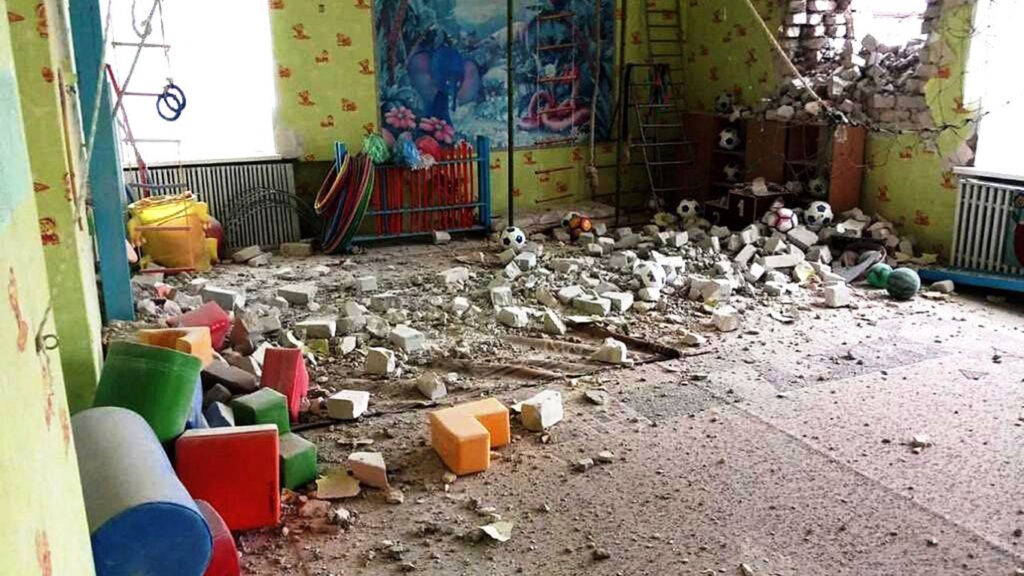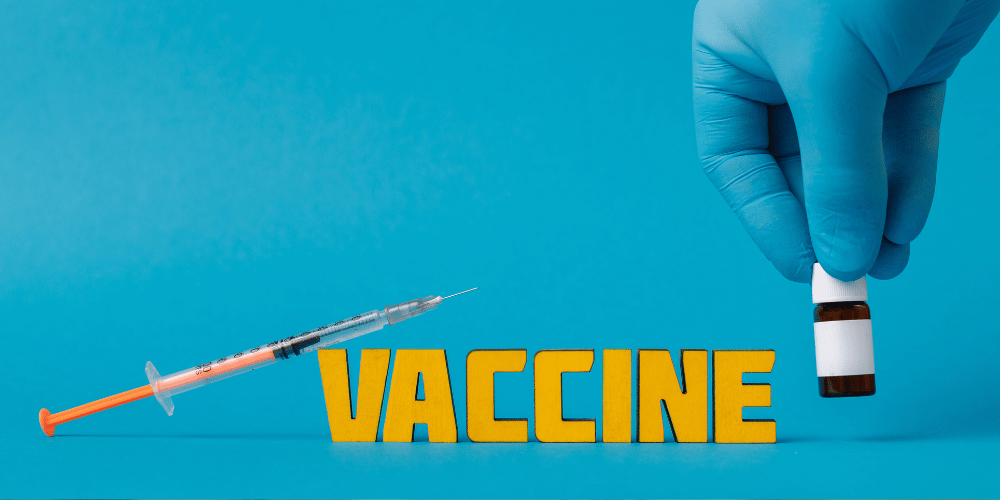On 24th February 2022, Russia invaded Ukraine in an escalation of the Russo-Ukrainian War that started in 2014. This triggered Europe’s most significant refugee crisis since World War II. Poland, a neighbouring country to Ukraine, has become a primary destination for Ukrainian refugees seeking safety and shelter.
In the initial three days of the Russian invasion, a staggering 115,000 Ukrainians crossed the Polish border and this figure escalated dramatically to 2.3 million in the following five weeks. As the conflict in Ukraine continues to displace thousands of families, the migration of Ukrainian refugee children to neighbouring countries like Poland raises concerns beyond immediate shelter.
Under the EU Temporary Protection Directive, people from Ukraine are entitled to access to healthcare in Poland, including vaccinations and in the midst one of the largest refugee upheavals of the 21st century, a glimmer of hope emerges – a boost in immunisation rates among Ukrainian refugee children, highlighting the paradoxical outcomes in times of conflict.
Poland’s initial response
At the onset of migratory movement from Ukraine, Poland initiated a comprehensive immunisation programme endorsed by international health organisations, ensuring access to a wide range of vaccines for children seeking refuge.
Primary response:
- 12 mandatory vaccines for Ukrainian children (in line with Poland’s current recommended vaccine schedule);
- mandatory vaccines for any child staying in Poland for more than three months
- mandatory immunisation for all children attending schools in Poland
This proactive approach not only protected the health and well-being of refugee children but also largely reduced the risk of an endemic within host communities.
Ukraine’s vaccine programme prior to the war

Unlike Poland and here in the UK, Ukraine does not issue standard national immunisation cards and vaccine records may vary by clinic and year of vaccine administration. This complicates the task of maintaining accurate vaccine records and there are concerns that certain vaccination certificates issued to Ukrainian children may be fake.
Generally in Ukraine the number of children vaccinated from birth to aged 16 is relatively low. The figures taken from Centers for Disease Control and Prevention showed that in 2016 there was only a 20% uptake of vaccinations for diphtheria, tetanus, and pertussis, with the measles and tuberculosis vaccine at a 40% uptake and poliomyelitis at 50%.
Despite some improvement to these figures in the subsequent three years, as the ongoing conflict in Ukraine continues to devastate infrastructure and disrupt healthcare services, there is a looming risk of vaccination rates plummeting once again.
Ukraine vs Poland Vaccine schedules

According to the World Health Organisation, the vaccination schedules in Poland and Ukraine align for 10 communicable diseases. This includes, diphtheria, tetanus, polio, pertussis, hepatitis B, pneumococcal, haemophilus influenza type b (Hib), measles, mumps and rubella.
However, there are some distinctions and the main difference lies in the dosing regimen for the polio vaccine. Ukrainian children receive 6 doses of the polio vaccine, similarly to children in Poland, initially receiving two of an inactivated polio vaccine (IPV). However, unlike Polish children, Ukrainian children then receive four doses of the live oral polio vaccine (OPV), which has not been administered in Poland since 2016.
The Ukrainian vaccination schedule does not include vaccines against rotaviruses and pneumococcal infections, which are compulsory in Poland, nor does it include the vaccine against chickenpox, which is recommended in Poland.
Interestingly among the 38 countries in Europe, only 18 have implemented publicly funded immunisation programs for the rotavirus gastroenteritis.
How has Russian Propaganda Influenced Ukraine?
The linked article in the introduction asserts that Ukraine has endured a prolonged influence from Russia, marked by a history of Russian propaganda regarding healthcare and resistance to aligning with European guidelines.
Campaigns of misinformation and anti-vax movements in Russia has significantly influenced numerous Ukrainian parents, prompting many to decline mandatory vaccinations for their children and as result, Ukraine has seen a notable surge in infectious diseases in children, such as measles.
Whilst on paper, the vaccination system in Russia is similar to other European countries, the policy under the Russian model is thought to be less robust and accessible to its residents. Although there is a wide range of clinics and hospitals in big cities like Moscow, the situation is very different in rural areas. Many towns and villages across the country having no proper medical infrastructure to speak of.
In the far East of Ukraine, close to the Russian border, regions like Donetsk and Luhansk have long been controlled by pro-Russian rebels. In these Russian-speaking regions known for coal mines, steel factories, and chemical plants many embrace the “Russian world” ideology, which denies Ukraine’s existence and advocates for its control by Moscow.
Russian trolls have been propagating the anti-vaccine movement for many years and misinformation is particularly strong in Ukraine as a result. Furthermore, Ukrainian families in these easterly regions were used to receiving Soviet-era benefits such as free healthcare and education.
In Ukraine’s efforts to break away from Russia and aligning more with European norms, many feel their situation has worsened under the financially struggling Ukrainian government. This has created uncertainty for Ukrainian parents as they navigate between traditional practices and new information and integration with Europe.
The Importance of Immunisation in Refugee Settings

Immunisation plays a vital role in safeguarding public health, especially in vulnerable populations such as refugees. Displacement often exposes individuals to crowded living conditions, inadequate sanitation, and limited access to healthcare facilities, creating an environment conducive to the spread of infectious diseases. Immunisation acts as a critical preventive measure, in particular offering protection against diseases like measles, polio, and diphtheria, which can spread rapidly in such settings.
Vaccine Hesitancy Remains
Authorities in Poland still have many challenges ahead in achieving widespread acceptance of vaccines in the Ukrainian refugee population.
Recent research conducted by UNICEF sheds light on the Ukrainian families’ stance on vaccinations. The study shows 50% of Ukrainian parents are willing to vaccinate their children with all the vaccines mandatory in Poland, whilst 12% are open to some vaccinations but not all; 22% indicate they do not plan to vaccinate their children in Poland at all and 4% are anti-vaccination in their home country.
Vaccination rates in Ukrainian refugees in Poland
For those hesitant about vaccinating their children, the primary reason was because of the intention (and hope) to leave Poland to return home in the near future.
Many Ukrainians intending to stay in Poland and those needing childcare and schooling show the most willing to comply and this is likely because of Poland’s mandatory guidelines when it comes to enrolment.
What have we learnt?

In the midst of a humanitarian crisis and whilst there will be many health repercussions from the devastation of war that is inevitably yet to be faced, in a paradoxical turn, there is the question whether many children’s lives have arguably been saved because of receiving these vaccines and in some cases, better healthcare in general and thereby the risk from easily avoidable diseases has been prevented or reduced.
The increased uptake in immunisation rates among Ukrainian refugee children in Poland highlights the critical role of vaccination policies in safeguarding public health during humanitarian crises. By implementing robust immunisation programs, countries can effectively protect displaced populations and prevent the spread of infectious diseases, contributing to the health and resilience of communities affected by conflict and displacement.
Challenges still to face
While the surge in immunisation rates among Ukrainian refugee children in Poland is promising, challenges remain. Sustaining high vaccination coverage requires ongoing efforts to ensure access to vaccines – which requires on-going funding and health promotion including vaccine awareness and addressing barriers to healthcare services.
Looking ahead, it is crucial to prioritise the health needs of displaced populations, including access to immunisation services, as part of broader humanitarian responses. By adopting inclusive and comprehensive vaccination policies, countries hosting refugees can mitigate the risk of disease outbreaks and promote the well-being of vulnerable children and communities.
So far, Polish health officials have confirmed that availability of the 12 compulsory vaccines and COVID-19 vaccines for refugee children in Poland, as well as those for meningococcal disease and chickenpox, has not posed a problem.
Protection Beyond Borders

The significance of Poland’s immunisation programme extends beyond the well-being of Ukrainian refugee children. Immunisation not only protects individual children but also helps safeguard the health of the entire population, including Polish citizens and other residents. By preventing the spread of infectious diseases within host communities, this proactive approach contributes to the overall public health and safety of the region.
Acknowledging the complexity of this situation and the potential for different outcomes as Ukrainians continue to move between countries, the hope is that ongoing integration with Europe will lead to a higher rate of vaccination among children and decrease parental vaccine hesitancy in Ukraine.
Korzeniewski, K et al (2024). Ukrainian war refugees and migrants in Poland: implications for public health. Journal of Travel Medicine, 2024, 1–4. (Accessed April 2024).
World Health Organisation. Regional Office for Europe. STEPS: prevalence of noncommunicable disease risk factors in Ukraine 2019. Copenhagen, Denmark: WHO/Europe, Available from: https://apps.who.int/iris/bitstream/handle/10665/336642/WHOEURO-2020-1468-41218-56060-eng.pdf?sequence=1&isAllowed=y. (Accessed April 2024)
European Centre for Disease Prevention and Control. Operational Public Health Considerations for the Prevention and Control of Infectious Diseases in the Context of Russia’s Aggression Towards Ukraine. Stockholm: ECDC, 2022, Available from: https://www.ecdc.europa.eu/sites/default/files/documents/ prevention-control-infectious-diseases%E2%88%92Russiaaggression.pdf (Accessed April 2024).
Finnegan, G. (2022). Vaccines Today: Poland offers free vaccination to refugees from Ukraine, but uptake remains low. (n.d.).https://www.vaccinestoday.eu/stories/poland-offers-free-vaccination-to-refugees-from-ukraine-but-uptake-remains-low. (Accessed April 2024).
CPD Reflective Practice





